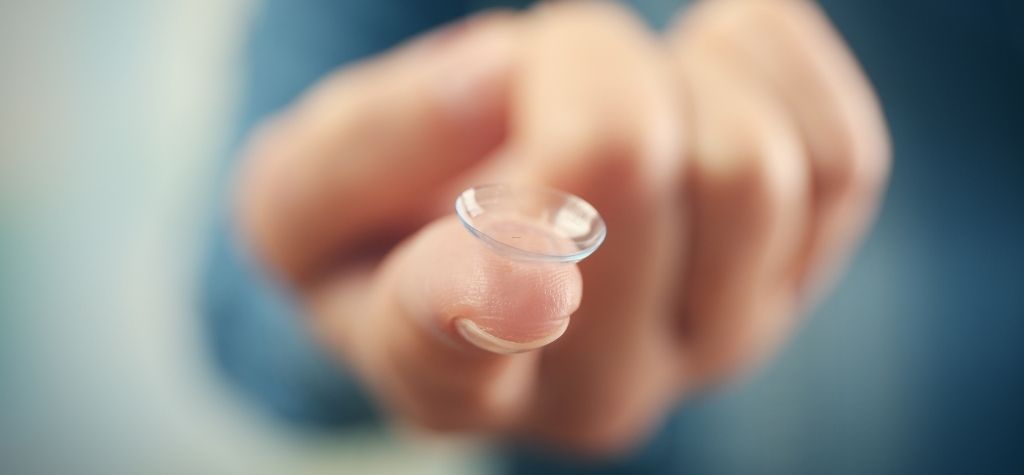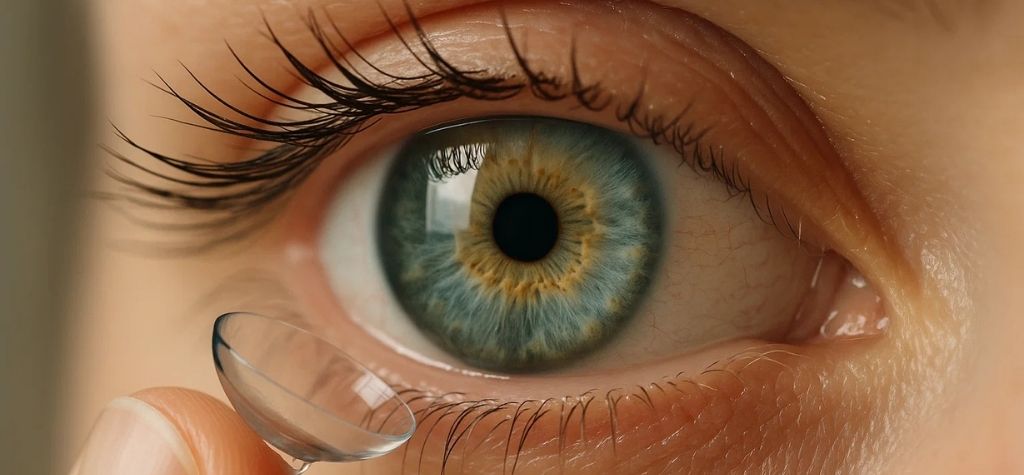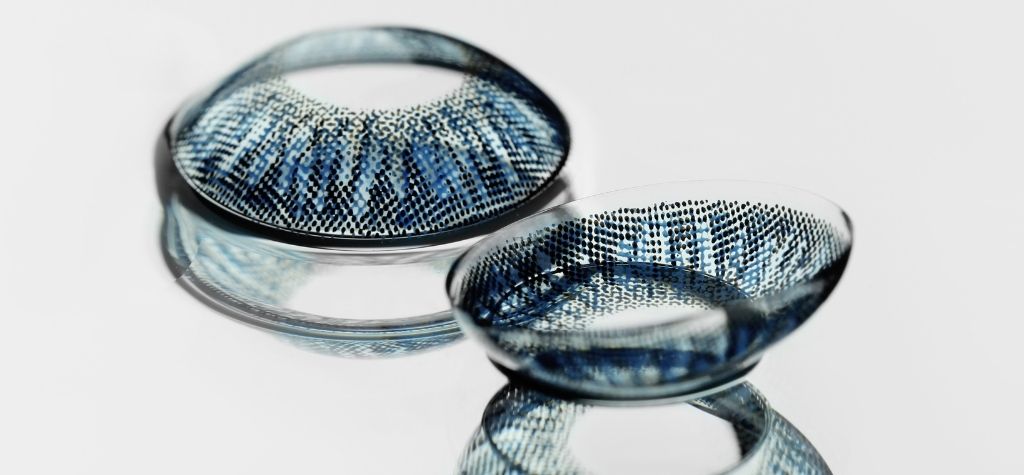A new type of contact lens aims to fight germs

Many people who wear contact lenses worry about infections. The clear pieces of plastic sit on your corneas for hours or days, so germs can stick to them and grow. When you add water or touch your lenses with unwashed hands, harmful bacteria can invade. They can cause bacterial keratitis, which is a painful infection of the cornea. Symptoms include eye pain, redness, blurred vision, tearing and eye discharge. If left untreated, bacterial keratitis may lead to scars or even blindness.
Lens care rules help prevent these infections, but 99 % of contact‑lens wearers admit to risky behavior. Many people sleep in their lenses, reuse old solution or rinse lenses in tap water. These bad habits let bacteria attach, form slimy biofilms and multiply. Soft lenses, especially those worn overnight, have higher infection rates (13 to 21 cases per 10,000 wearers per year) compared with rigid gas permeable lenses.
To protect millions of users, researchers are developing self‑disinfecting contact lenses. These lenses use sunlight or other light sources to kill bacteria on their surface. They could reduce the need for daily cleaning and cut the number of infections. Early studies offer hope that such lenses might reach clinics within the next few years. This article explains how they work, what trials have shown, and why they could be available by December 2025.
Why infections happen with contact lenses
Contact lenses sit directly on the cornea. They block oxygen and trap tear fluid, creating a moist environment where microbes like Pseudomonas aeruginosa and Staphylococcus aureus can thrive. Tiny scratches during insertion allow germs to invade. Sleeping in lenses or wearing them too long reduces tear exchange and makes matters worse. Exposing lenses to tap water or swimming pools introduces harmful bacteria. Even your hands carry bacteria from the skin and the environment.
The Centers for Disease Control and Prevention (CDC) say that wearing contacts overnight, not disinfecting them properly and topping off lens solution increase the risk of bacterial keratitis. Eye injuries, lid problems or weakened immune systems also increase risk. Many people ignore these warnings, so improved lens materials could be a useful safeguard.
How sun‑activated coatings kill bacteria

One promising approach uses a light‑activated coating made from tiny clusters of gold and a blue dye called crystal violet. University College London researchers reported the coating in the journal Nature Communications in 2020. It works at low‑intensity ambient light, about 300 lux, which is similar to lighting in homes and clinics. When light hits the dye, it produces reactive oxygen species—chemicals that damage bacterial cell membranes and DNA. Pairing the dye with gold, silver or zinc oxide amplifies this effect.
During tests, surfaces coated with the gold–crystal violet polymer were inoculated with 100,000 colony‑forming units of S. aureus or E. coli. In ambient light, the coating reduced S. aureus by 3.3 log units (over 99.9 % kill) within six hours and reduced E. coli by 2.8 log units after 24 hours. A control coating without gold showed no kill in the same lighting. Researchers discovered that the coating makes hydrogen peroxide, the same disinfectant used in some lens cleaning systems, through the action of light and humidity. The gold clusters—each containing only 25 atoms—are key to generating the hydrogen peroxide.
Unlike earlier coatings that needed intense ultraviolet light, this system works with ordinary indoor light. It even kills bacteria slowly in the dark, but light speeds up the reaction. Because the technology uses little gold, it could be produced at reasonable cost. In the future, such coatings might be applied to phone screens, keyboards, medical tubing—and contact lenses. When integrated into a lens, the coating could continually generate mild amounts of hydrogen peroxide to kill microbes while still being safe for the eye.
Benefits and challenges
The light‑activated coating has several advantages:
- Passive disinfection – The lens disinfects itself when exposed to everyday light. Wearers would not need to soak lenses in solution.
- Broad spectrum – It kills both gram‑positive (like S. aureus) and gram‑negative (like E. coli) bacteria.
- Low gold content – Only tiny amounts of gold are needed, so cost and toxicity are low.
- Ambient light activity – It works in normal indoor light, avoiding harmful ultraviolet radiation.
However, several hurdles remain before the coating can be integrated into contact lenses. The polymer must be biocompatible and not irritate the cornea. Researchers need to ensure that hydrogen peroxide levels stay low enough to avoid discomfort but high enough to kill microbes. The coating must also maintain lens clarity and oxygen permeability. Further lab and animal studies are required, followed by human trials.
Antimicrobial peptides: another tool to fight bacteria

A different strategy uses antimicrobial peptides, molecules naturally made by our immune system. Peptides such as melimine and its shorter derivative Mel4 can be attached to lens surfaces to repel bacteria. These peptides disrupt bacterial membranes and prevent colonisation without harming human cells. Silver and selenium coatings were tried in the past but showed toxicity or poor efficacy. Peptides offer a gentler alternative.
The Mel4 clinical trial
Researchers at the University of New South Wales and other centres ran a phase II/III clinical trial of Mel4‑coated hydrogel lenses. They used etafilcon A lenses (Acuvue 2) and coated one lens in each pair with Mel4 while leaving the other lens uncoated. One hundred seventy‑six participants wore these lenses for 14‑day extended wear and replaced them every two weeks.
The trial tracked corneal infiltrative events (CIEs). These events include microbial keratitis, contact lens peripheral ulcers and inflammatory keratitis. Nine participants experienced a CIE over three months: three wearing Mel4‑coated lenses and six wearing uncoated lenses. Although the difference wasn’t statistically significant because of the small number of events, the Mel4 group had about half as many infections, suggesting a protective effect. When a participant who overwore the lens was excluded, the reduction reached 69 %, though it remained statistically non‑significant.
To confirm that the coating worked, random lenses were tested in the lab before wearing. Mel4‑coated lenses contained about 62.6 micrograms of peptide per lens and reduced the adhesion of P. aeruginosa and S. aureus by > 1.8 log10 CFU per lens compared with uncoated lenses (p < 0.001). This shows that the peptide strongly inhibits bacteria.
Biocompatibility and comfort
An important question is whether antimicrobial coatings irritate the eyes. In the Mel4 trial, researchers measured redness, roughness and staining of the conjunctiva and cornea. They found no significant differences in bulbar redness, limbal redness, palpebral redness or palpebral roughness between Mel4‑coated and control lenses. Lens‑induced conjunctival staining and indentation were also similar. Corneal staining of the central, nasal, temporal and superior areas showed no significant differences (p > 0.35). These results indicate that the coating did not cause more inflammation or damage than standard lenses.
Comfort ratings were also encouraging. Participants scored overall comfort, dryness and lens‑edge awareness on a 0–100 scale. There was no significant difference in comfort or dryness between Mel4‑coated and control lenses. Overall comfort decreased by about 3–4 points over three months for both lens types, while dryness increased slightly, but these changes were similar for both groups. One month after stopping lens wear, there were still no differences in ocular signs or symptoms. Drop‑out rates were similar between groups, and reasons for leaving the study (such as discomfort) did not differ.
Advantages of peptide coatings
Antimicrobial peptides are attractive because they mimic the eye’s natural defenses. They kill bacteria quickly by disrupting membranes but are less likely to cause resistance. Unlike antibiotics that leak from the lens, peptides stay on the surface, reducing the chance of toxicity. Because the coating does not release chemicals into the tear film, it leaves the normal ocular microbiome undisturbed. In addition, peptides can be attached to many lens materials, including soft hydrogel and silicone hydrogel. The main challenges are scaling up production, ensuring long‑term stability, and verifying efficacy in larger trials with modern lens materials.
Combining sunlight and peptides: a potential game changer
Imagine a contact lens that disinfects itself whenever you step into the light and that repels bacteria even in the dark. Researchers believe that combining light‑activated coatings with antimicrobial peptides could achieve this. The light‑activated coating would generate hydrogen peroxide under normal indoor light to kill any bacteria on the lens surface. The peptide coating would provide a second line of defence, preventing microbes from sticking in the first place. By layering these technologies, engineers hope to create a self‑sterilizing lens that works around the clock.
Developers must ensure that the combined coating does not block light or change lens optics. They also need to confirm that hydrogen peroxide levels are safe and that the peptides remain attached during wear. Regulatory approval will require large human trials comparing infection rates and safety over months. If successful, such lenses could offer a simple way to reduce microbial keratitis without relying entirely on user hygiene.
How soon could these lenses reach patients?

No self‑disinfecting contact lens has reached the market yet. However, research progress suggests that clinical trials and regulatory approvals might be possible within a few years. The 2020 light‑activated coating study used scalable methods. The Mel4 peptide has already undergone extended‑wear human trials with promising safety data. With further optimization, a combined approach could be ready for larger phase III trials soon.
Assuming that researchers can demonstrate consistent bacteria‑killing in laboratory models by 2024 and launch phase III trials in early 2025, a conditional regulatory approval by late 2025 could be possible. Medical devices often require at least 6–12 months of review. That means the first sun‑activated, bacteria‑killing lenses could reach clinics by December 2025, though this timeline remains speculative. Unexpected technical or safety issues could cause delays. Conversely, strong results could accelerate approval.
Staying safe until new lenses arrive
While we wait for self‑disinfecting lenses, proper lens hygiene remains essential. Here are simple tips to protect your eyes:
- Follow the replacement schedule. Change lenses as recommended by your eye doctor. Do not sleep in lenses unless they are prescribed for extended wear.
- Wash your hands with soap and water before touching lenses. Dry with a lint‑free towel.
- Use fresh solution every time you store lenses. Do not top off old solution or use tap water.
- Clean the case regularly. Rinse it with solution, wipe dry with a clean tissue and store upside down. Replace cases every three months.
- Avoid water exposure. Remove lenses before swimming or showering. Water can harbor harmful microbes like Acanthamoeba and bacteria.
- Watch for symptoms. If you experience pain, redness, blurred vision or discharge, remove your lenses and see an eye doctor immediately.
The bigger picture: fighting eye infections globally
Self‑disinfecting lenses could help address a broader public health problem. Millions of people wear contacts around the world. According to a 2015 CDC report, one in six U.S. adults uses contact lenses. With global wearers rising, even a small decrease in infection rates could prevent thousands of cases of microbial keratitis each year. Reducing infections also lowers healthcare costs for doctor visits, antibiotics and potential surgeries.
Such lenses may also benefit people in low‑resource settings where access to clean water and lens‑care products is limited. A lens that self‑disinfects in sunlight could be easier to use safely. However, affordability will be critical. Manufacturers need to keep costs low so the technology is accessible to all.
Research frontiers beyond bacteria
The same light‑activated and peptide technologies might be adapted to target fungi, protozoa or viruses. Researchers are exploring photodynamic therapy using other dyes and nanoparticles to treat fungal keratitis and Acanthamoeba keratitis, which are harder to manage than bacterial infections. Some peptides can also disrupt fungal cell walls or viral envelopes. Future lenses might incorporate multiple agents to fight a broad range of pathogens.
Another frontier is drug‑releasing lenses. Scientists are designing contact lenses that release antibiotics, anti‑inflammatory drugs or anti‑glaucoma medications in response to triggers like pH or light. A lens that both kills bacteria and delivers drugs could treat infections more effectively. Combined with sensors to monitor eye pressure or tear composition, tomorrow’s contact lenses may become smart medical devices.
Conclusion
Contact lens wear brings freedom but also risk. Bacteria can hitchhike on lenses and cause infections that threaten sight. Researchers are working on sun‑activated, bacteria‑killing lenses to make contact lens wear safer and easier. The gold–crystal violet coating generates hydrogen peroxide when exposed to normal light, killing S. aureus and E. coli within hours. Mel4 peptide‑coated lenses reduce bacterial adhesion by 1.8 log units and show no adverse effects on comfort or eye health. Early human trials suggest these lenses could halve the number of corneal infiltrative events. Combining these technologies might create self‑disinfecting lenses that work day and night.
Although some believe such lenses could reach clinics by December 2025, challenges remain. Scientists need to ensure the coatings are safe, durable and cost‑effective. Large clinical trials must prove that the lenses truly reduce infections and work with modern materials. Even when self‑sterilizing lenses arrive, good hygiene will still matter: wash your hands, replace your lenses on schedule and avoid water exposure. With continued innovation and careful testing, the dream of lenses that clean themselves and protect your eyes may soon come true.

